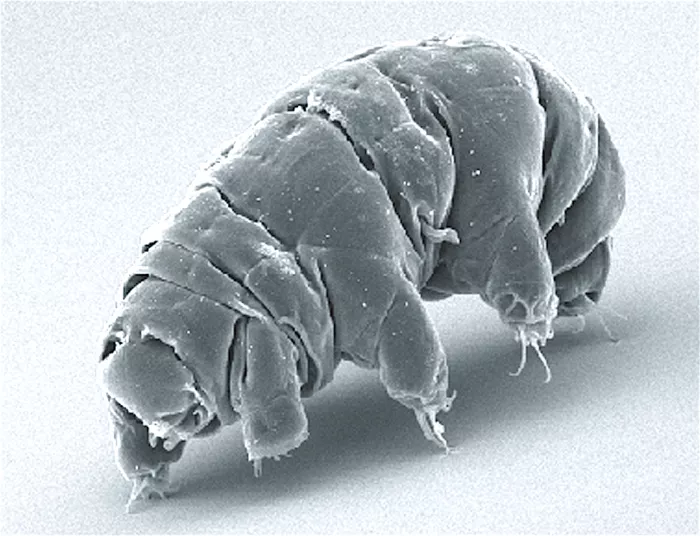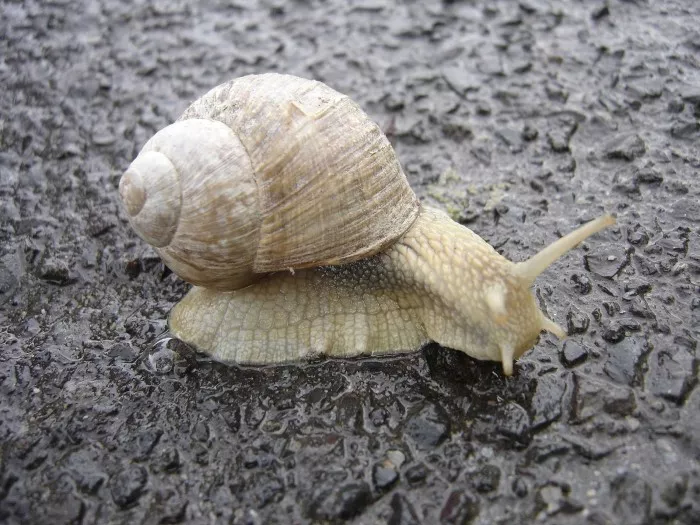On May 16, Beijing time, according to foreign media reports, for microscopic creatures, their crawling speed is too slow. Sometimes they can carry other "vehicles". For example, slow walkers can travel remotely by being swallowed by snails. They stay in the snail's intestines for two days, and finally excrete from the anus. They leave the snail with a mass of feces, and then reproduce in new areas.

Slow walkers can travel remotely by being swallowed by snails. They stay in the snail's intestines for two days and finally excrete from the anus, leaving the snail with a mass of feces, and then reproduce in new areas.
Although this travel strategy has obvious disadvantages, for small slow walking creatures, traveling with snails must be faster than crawling by themselves. Unfortunately, scientists found that the survival probability of slow walking animals in the snail journey is only 30%, and slow walking creatures such as water bears are at risk of being completely eliminated by snails.
Slow walking creatures, also known as mossy piglets or water bears, are 0.05-1.2mm long. These micro creatures are very cute. Under the microscope, they are chubby little creatures with round faces and eight thick and short legs. They can be found anywhere on the earth with liquid water, but few people know how these little creatures spread to the new environment and reproduce.
Previously, scientists guessed that wind and water are the main "conveyor belts" for microorganisms, including slow-moving organisms, to deliver them from one ecosystem to another, but the latest research shows that this is not exactly the case. Some larger organisms may be their "vehicles", equivalent to buses and taxis for microbial stowaways.

On March 31, an article published in the journal ecology said that a total of 10 species of slow walking organisms were found in the feces of wild snails, of which 5 are still alive, and some slow walking organisms survivors even gradually recover and reproduce, which provides the first evidence that slow walking organisms reproduce after excretion from the intestinal tract of animals.
But there has been little direct evidence that slow walkers travel long distances by swallowing and excreting snails. In 2020, Tommi vuori, the author of the Research Report and a graduate student in the Department of biological and Environmental Sciences at uvastrile University in Finland, first considered the view that some animals swallow and excrete slow-moving organisms. In the same year, the journal polar biology published a scientific interview and dialogue between ruori and the director. They found that there were slow-moving organisms in bird droppings. Then ruori became interested in a study published in the Journal of parasitology in 1962, which described that scientists found signs of slow walker survival in the feces of terrestrial snails.
The research report further stimulated roori's desire to find other terrestrial animals to spread slow walking creatures. He decided to start with moss eating animals. After all, slow walking creatures often live in mossy environment, and it is easy for people to sample the feces of these animals.
That's why I think land snails are a 'vehicle' for slow walking creatures - in Finland, anyone who has done gardening knows that snails eat almost everything! So my colleagues and I collected 21 snail fecal samples in a community garden and took the snail fecal samples to the laboratory for testing for more than 30 hours. The results showed that about 25% of the fecal samples found two slow-moving organisms - xiongchong and Gaosheng xiongchong.
On March 31, ruori published an article in the journal ecology, saying that a total of 10 species of slow walking organisms were found in the feces of wild snails, of which 5 are still alive, and some slow walking organisms survivors even gradually recover and reproduce, which provides the first evidence of the reproduction of slow walking organisms after excretion from the intestinal tract of animals.
Then, the researchers fed land snails with slow-moving organisms and found that 218 (about 30%) of the 694 slow-moving organisms fed survived and excreted in vivo. There were 78 dead slow-moving organisms in the feces, and the rest should be "digested by the intestine".
It is reported that slow walking creatures have tenacious vitality. They can live in extremely harsh conditions, such as extreme temperature, ultraviolet radiation, vacuum environment, quantum entanglement, and even be hit by high-speed bullets. Scientists call the tenacious survival state of slow walking creatures "bucket state", which can expel moisture from their bodies and slow down the metabolic process. However, it is impossible to enter the barrel state during the snail's intestinal journey, because the snail's intestine is very wet, so the slow walker lacks the protection that the barrel state may provide during this process.
Most snails retain "slow walker passengers" in their intestines for about two days, and then excrete them in the form of feces. The researchers say this means that they can reproduce with the migration of snails, which helps to establish populations in New Territories.
"It's a major discovery that land snails have become the transportation carrier of slow-moving organisms, suggesting that water bears can reproduce in new areas in the future, but it's not enough to transfer one living body to another. Their reproductive ability is a prerequisite for expanding new habitats," ruori said (